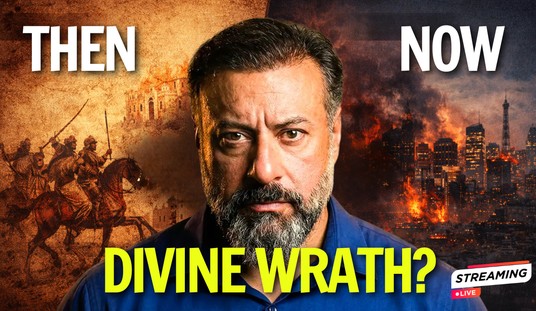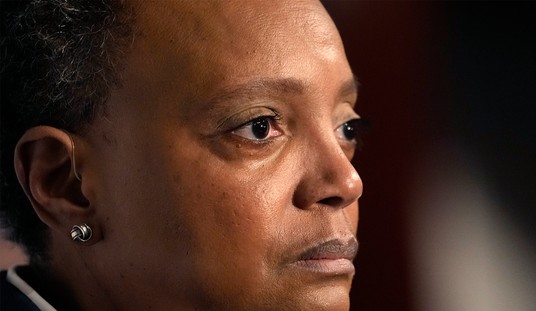During the final 2012 presidential debate, which focused on U.S. foreign policy, the only mention of Latin America came from Governor Romney, who issued a familiar call for expanding hemispheric trade. That was it. Viewers could be forgiven for assuming that, in the famous words of Richard Nixon, “Latin America doesn’t matter.”
Except that it does matter, both economically and strategically, and its importance to the United States will only grow in the years ahead. Which leads to the question: What exactly does it mean for a U.S. president to show genuine leadership in Latin America?
When Bill Clinton championed the North American Free Trade Agreement in the face of strong opposition from his own party, which at the time controlled both houses of Congress, he was showing real leadership. When George W. Bush aggressively pushed wavering House Republicans to support the Central American Free Trade Agreement (CAFTA), he was showing real leadership. (“For days” before the July 2005 House vote on CAFTA, Fred Barnes wrote in The Weekly Standard, “Bush met with House members individually and in small groups. He traveled to Capitol Hill to address the House Republican conference on the morning of the vote, speaking passionately for nearly 45 minutes with no notes, then answering a dozen questions.”) Likewise, when Bush revamped Plan Colombia to let Bogotá use antidrug aid in its fight against the FARC and ELN guerrillas, he was showing real leadership.
President Obama has yet to demonstrate similar leadership on any major hemispheric issue. Even Georgetown law professor Rosa Brooks, a liberal Democrat who served in both the Clinton and Obama administrations, recently acknowledged that Obama has “mostly ignored” Latin America. Indeed, his biggest accomplishments in the region all stemmed from Bush-era initiatives.
For example, the Obama administration has signed bilateral trade agreements with Colombia and Panama. But those agreements were originally agreed and signed under President Bush.
The administration has pursued a Trans-Pacific Partnership (TPP) trade deal that would include Chile, Mexico, and Peru. But the TPP talks were launched under Bush.
The administration has increased security cooperation with Mexico through the Mérida Initiative. But Mérida was created under Bush.
The administration has expanded the Central America Regional Security Initiative (CARSI). But CARSI began as part of Mérida — under Bush.
To be sure, Obama’s record in Latin America goes beyond the completion or expansion of Bush-era initiatives. Unfortunately, his record is filled with setbacks, blunders, and diplomatic failures.
When the Obama administration (wisely) tried to increase military cooperation with Bogotá through a new basing agreement, Colombia’s supreme court declared the agreement unconstitutional unless approved by the national congress. (Colombian president Juan Manuel Santos has chosen not to seek congressional approval.)
When the administration (unwisely) demanded that Chávez acolyte Manuel Zelaya be restored to the presidency in Honduras, despite his attacks on the constitutional order, the interim Honduran government of Roberto Micheletti said no, prompting a lengthy standoff. In the end, Washington gave up on reinstalling Zelaya, and Micheletti remained president until the inauguration of Porfirio Lobo, the winner of Honduras’s post-Zelaya election.
When the administration extended an olive branch to Cuba, with President Obama loosening sanctions and calling for “a new beginning” in bilateral relations, the Castro regime locked up a USAID contractor named Alan Gross and cracked down on democracy activists throughout the island.
When the administration tried to improve relations with Ecuadorean president Rafael Correa, another quasi-authoritarian Chávez disciple, it was once again disappointed. In June 2010, Secretary of State Hillary Clinton traveled to Quito, hugged Correa, and declared that “the goals that Ecuador and its government have set are goals that the United States agrees with.” Less than a year later, the Ecuadorean government expelled U.S. ambassador Heather Hodges over critical remarks she had made in WikiLeaks cables. Speaking of WikiLeaks, Correa granted asylum to Julian Assange this past August, just a few months after he boycotted the Summit of the Americas.
Finally, when the administration launched a gunwalking program known as “Operation Fast and Furious,” it let approximately 2,000 firearms move across the border and into the hands of Mexican gangsters. Those weapons, along with weapons linked to separate U.S. gunwalking programs, have since been connected to a pair of high-profile massacres in Juárez, the killing of a U.S. Border Patrol agent named Brian Terry, and the murder of a U.S. Immigration and Customs agent named Jaime Zapata.
The Mexican drug cartels are increasingly active in Central America, especially in the Northern Triangle countries of El Salvador, Guatemala, and Honduras. While El Salvador has managed to reduce its homicide rate by facilitating a fragile truce between its two largest street gangs, the durability of that truce is highly uncertain. Meanwhile, Guatemala and Honduras are facing disastrous levels of drug-related violence. Indeed, Honduras is now considered “the most violent country in the world,” outside of war zones, and the super-violent Zetas organization now controls a frightening amount of Guatemalan territory.
That’s why the United States recently deployed about 200 Marines to Guatemala (their mission ended in mid-October), and why it recently set up three new military bases in Honduras. Unfortunately, after a series of deadly shootings, the Obama administration had to suspend all joint operations with Honduran security forces. According to a New York Times report,
A sweeping new plan for Honduras, focused more on judicial reform and institution-building, is now being jointly developed by Honduras and the United States. But State Department officials must first reassure Congress that the deaths have been investigated and that new safeguards, like limits on the role of American forces, will be put in place.
If President Obama championed a Plan Colombia–style aid program for Central America, he would be showing real leadership. If he pushed for a hemispheric free-trade zone, as Governor Romney has proposed, he would be showing real leadership. If he worked to achieve serious reforms at the Organization of American States, as I and others have proposed, he would be showing real leadership.
Of course, Obama may not get the opportunity. But regardless of who wins the election on November 6, it’s time to end the leadership vacuum in Latin America.
(You can read this article in Spanish here.)









Join the conversation as a VIP Member